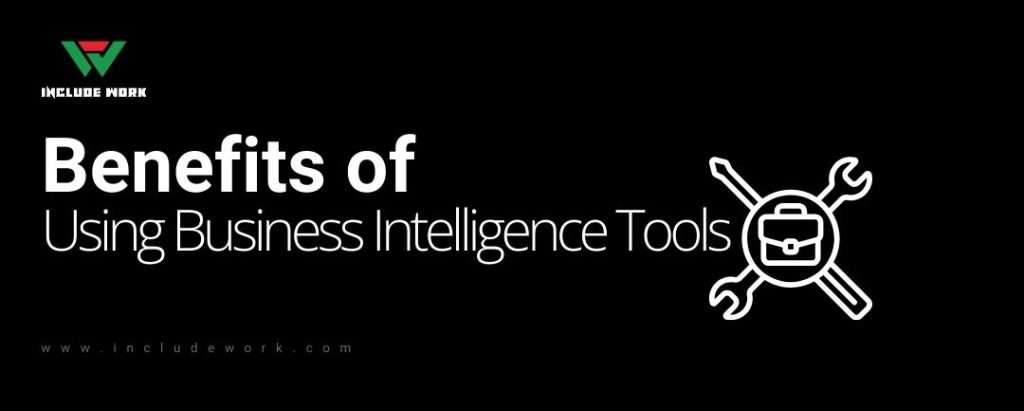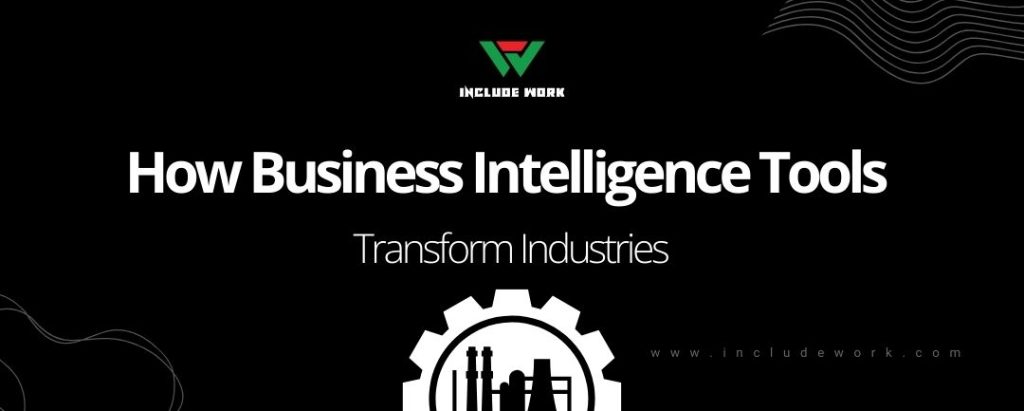In today’s data-driven world, businesses are generating more information than ever before. But what good is all this data if you can’t unlock its insights? Business intelligence tools are the key.
Table of Contents
Think of them as powerful software applications that transform raw data into actionable intelligence. BI tools help you see trends, identify patterns, and gain a deeper understanding of your customers, operations, and market. Imagine being able to make data-driven decisions with confidence – that’s the power of BI tools at your fingertips.
What Are Business Intelligence Tools?

Business intelligence tools are a category of software designed to collect, analyze, and visualize data. They act as a bridge between your data and actionable insights, transforming raw numbers into clear and understandable formats.
Here’s a breakdown of what BI tools can do:
Data Collection: BI tools can gather data from various sources like sales figures, customer information, website analytics, and social media.
Data Analysis: They can perform calculations, identify trends, and uncover hidden patterns within your data.
Data Visualization: BI tools present complex data in a user-friendly way, using charts, graphs, and dashboards that make it easy to understand at a glance.
In simpler terms, BI tools are like translators, taking the language of data and turning it into something everyone in your business can comprehend. This empowers you to make informed decisions based on facts, not just gut feelings.
Types of Business Intelligence Tools
The world of BI tools is vast, offering a variety of options to suit different business needs. Here are some of the most common types
Reporting Tools: These tools generate pre-defined reports with specific data sets and layouts. Imagine them as customizable news feeds highlighting key metrics for your business.
Data Visualization Tools: As the name suggests, these tools excel at creating visually appealing charts, graphs, and dashboards. They help you see trends and relationships within your data that might be missed in spreadsheets.
Data Mining Tools: These advanced tools go beyond surface-level analysis, uncovering hidden patterns and insights within large datasets. Think of them as data detectives, digging deep to reveal valuable information.
Online Analytical Processing (OLAP) Tools: These tools allow you to analyze data from multiple dimensions, like slicing and dicing sales figures by region, product category, and time period. Imagine them as a multi-layered map, helping you explore your data from different angles.
This is just a glimpse into the different types of BI tools available. The best choice for your business will depend on your specific needs and goals.
Benefits of Using Business Intelligence Tools
In today’s competitive business landscape, data-driven decision making is no longer a luxury, it’s a necessity. BI tools empower you to harness the power of your data and unlock a wealth of benefits, including

Improved Decision Making: BI tools provide clear and concise insights, allowing you to make informed decisions based on facts and trends, not just intuition.
Increased Efficiency: By automating data analysis and reporting, BI tools free up your team’s time to focus on strategic initiatives.
Enhanced Customer Understanding: Analyze customer behavior and preferences to personalize marketing campaigns, improve customer service, and boost satisfaction.
Boosted Revenue and Profitability: Identify areas for cost optimization, optimize pricing strategies, and make data-driven decisions that drive sales and profitability.
Competitive Advantage: Gain a deeper understanding of your market and competitors, allowing you to stay ahead of the curve and develop winning strategies.
A study by Gartner found that companies using BI tools experience a 13% increase in profitability compared to those who don’t.
Key Components of Business Intelligence Tools
While BI tools come in various forms, they typically share some core components that work together to deliver valuable insights

Data Extraction, Transformation, and Loading (ETL): This stage involves extracting data from various sources, transforming it into a consistent format, and loading it into a central repository for analysis. Think of it as gathering ingredients and prepping them for a delicious recipe.
Data Warehouse: This central repository stores all your historical data, making it readily available for analysis. Imagine it as a giant filing cabinet specifically for your business information.
Online Analytical Processing (OLAP) Engine: This powerful engine allows you to analyze data from multiple perspectives, drilling down into specific details or looking at the bigger picture. Think of it as a magnifying glass and a wide-angle lens rolled into one, letting you explore your data in depth.
Data Visualization Tools: As mentioned earlier, these tools translate complex data into easy-to-understand charts, graphs, and dashboards. Think of them as visual storytellers, bringing your data to life.
Reporting Tools: These tools generate pre-defined reports with specific metrics and layouts, keeping you informed on key performance indicators (KPIs). Imagine them as customizable dashboards that deliver essential business updates.
By working together, these components allow BI tools to transform raw data into actionable intelligence, empowering you to make data-driven decisions with confidence.
How Business Intelligence Tools Transform Industries
Business intelligence (BI) tools are no longer a niche technology – they’re revolutionizing how companies across various industries operate. Here are a few examples

Retail: Imagine personalizing product recommendations based on a customer’s past purchases and browsing history. BI tools help retailers gain a 360-degree view of their customers, leading to targeted marketing campaigns and increased sales.
Finance: Fraudulent transactions can be a major headache. BI tools with advanced analytics can detect suspicious activity in real-time, protecting financial institutions and their customers.
Healthcare: Data-driven insights from BI tools can improve patient outcomes. Doctors can analyze treatment trends, identify at-risk patients, and personalize care plans for better health outcomes.
Manufacturing: Imagine optimizing production lines to minimize waste and maximize efficiency. BI tools provide real-time data on equipment performance and material usage, allowing manufacturers to streamline operations and boost productivity.
These are just a few examples, and the impact of BI tools continues to grow across various sectors. As businesses collect ever-increasing amounts of data, BI tools will become even more crucial for gaining a competitive edge and achieving success.
Choosing the Right Business Intelligence Tools
With so many BI tools on the market, selecting the right one for your business can feel overwhelming. Here are some key factors to consider

Business Needs: Identify your specific goals and challenges. What data do you need to analyze? Are you looking for basic reporting or advanced analytics?
Budget: BI tools range in price from free options to enterprise-level solutions. Determine your budget and choose a tool that offers the features you need within your price range.
Ease of Use: Consider the technical expertise of your team. Some tools are user-friendly, while others require more technical knowledge.
Scalability: Think about your future needs. Will your data volume and user base grow? Choose a tool that can scale with your business.
Data Integration: Ensure the BI tool integrates seamlessly with your existing data sources like CRM, ERP, and marketing automation platforms.
Don’t be afraid to try out demos or free trials of different BI tools before making a decision. This will help you get a feel for the features and functionality before you invest.
The Role of Business Intelligence in Small and Medium Businesses (SMBs)
Traditionally, business intelligence (BI) tools were seen as the domain of large corporations with vast resources and complex data needs. However, the landscape is shifting. BI tools are becoming increasingly accessible and affordable, making them a valuable asset for small and medium businesses (SMBs) as well.

Here’s why BI tools are a game-changer for SMBs:
Level the Playing Field: SMBs can gain insights previously reserved for larger companies. BI tools empower them to understand customer behavior, optimize marketing campaigns, and make data-driven decisions that drive growth.
Streamline Operations: Imagine identifying inefficiencies in your supply chain or workflow. BI tools can analyze data to pinpoint areas for improvement, allowing SMBs to operate more efficiently and save costs.
Boost Customer Satisfaction: Understanding customer preferences is crucial for SMBs. BI tools can help analyze customer feedback, identify buying trends, and personalize marketing efforts, leading to happier and more loyal customers.
Data-Driven Decision Making: Gut feelings can only take you so far. BI tools provide clear and concise data visualization, allowing SMBs to make informed decisions based on facts, not just intuition.
Improve Resource Allocation: With limited resources, SMBs need to be strategic. BI tools can help identify areas where resources are underutilized or overspent, allowing for better resource allocation and improved return on investment (ROI).
Imagine a small clothing boutique struggling with low sales. A BI tool could analyze sales data, identify underperforming product categories, and reveal customer preferences. This empowers the boutique to optimize inventory, tailor promotions, and make data-driven decisions to boost sales.
Considering the cost-effectiveness and user-friendly nature of many BI tools available today, there’s no reason why SMBs can’t harness the power of data analytics to achieve success.
Future Trends in Business Intelligence Tools
The world of BI tools is constantly evolving, with exciting trends shaping the future of data analysis. Here’s a glimpse into what’s on the horizon

Artificial Intelligence (AI) and Machine Learning (ML): Expect BI tools to become even smarter, using AI and ML to automate tasks, identify hidden patterns, and generate predictive insights.
Natural Language Processing (NLP): Imagine asking your BI tool questions in plain English and getting clear answers. NLP will revolutionize how users interact with data, making it more accessible for everyone.
Embedded Analytics: Data analysis will become even more integrated into everyday business processes. BI tools will be embedded into various applications, providing real-time insights at your fingertips.
Cloud-Based Solutions: Cloud computing offers scalability, flexibility, and cost-effectiveness. Expect more BI tools to migrate to the cloud, making them accessible from anywhere with an internet connection.
Focus on User Experience (UX): As data becomes more complex, user experience will become paramount. BI tools will prioritize intuitive interfaces, interactive visualizations, and self-service analytics to empower users of all technical skill levels.
These trends highlight the growing importance of BI tools in the future. By embracing these advancements, businesses can unlock even greater value from their data and make data-driven decisions that lead to success.
Conclusion
Business intelligence tools are essential for modern businesses, offering powerful capabilities to analyze and visualize data. By leveraging these tools, companies can make better decisions, improve efficiency, and gain a competitive advantage. Understanding the types, benefits, key components, and future trends of business intelligence tools helps organizations choose the right solutions to meet their needs and drive success in an increasingly data-driven world.






